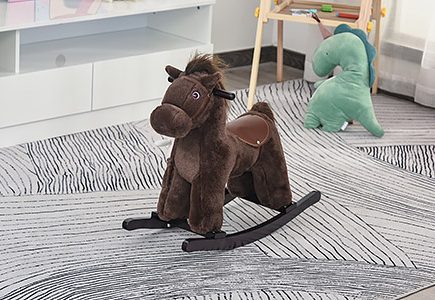Staying warm while camping in cold weather is essential not just for comfort, but for your safety and overall experience. Proper warmth helps prevent serious risks like hypothermia and frostbite by keeping your body temperature stable. It also improves sleep quality, which is important for maintaining energy and focus during outdoor activities. Most importantly, staying cozy allows you to truly enjoy your adventure, appreciate the beauty around you, and stay in good spirits—even when the temperatures drop.

1. Essential Tools and Gear for Staying Warm
To ensure you stay warm, pack the following essential gear:
| Item | Purpose |
| Four-Season Tent | Provides insulation and weather protection |
| Sleeping Bag with Proper Rating | Keeps body heat trapped |
| Thermal Sleeping Pad | Adds insulation between you and the cold ground |
| Portable Heater | Provides supplemental heat |
Choosing the Right Tent
Your tent plays a crucial role in keeping you warm. The right tent can protect you from freezing temperatures, wind, and moisture.
- Four-Season Tents: Designed for winter camping, these tents withstand heavy snow, strong winds, and extreme cold.
- Double-Walled Tents: Provide better insulation and reduce condensation buildup, keeping the interior dry and warm.
Sleeping Bags and Pads
A high-quality sleeping bag and thermal sleeping pad are essential for warmth and comfort.
- Temperature-Rated Sleeping Bags: Choose a sleeping bag rated for at least 10°F lower than the coldest temperature you expect to encounter. This extra margin helps you stay warm even during sudden cold snaps.
- Thermal Sleeping Pads: Prevent heat loss by creating a barrier between you and the cold ground. Look for pads with a high R-value for added insulation.

Pro Tip:
Select gear that matches the expected weather conditions. For added shelter and warmth, consider options like the Outsunny 4-6 Person Cabin Tent – 3-Room Waterproof Family Camping Shelter, which offers excellent weather protection and creates an insulated base camp.Built with a 3000mm water-resistant shell and UPF 30+ protection, plus a sewn-in groundsheet, it ensures you stay dry and comfortable. Multiple mesh windows provide ventilation, while zippered doors offer easy access. Comes with 12 ground stakes, 4 guy ropes, and a carry bag for effortless setup and transport.
2. Layer Up: The Right Clothing for Staying Warm

Proper clothing can make or break your cold-weather camping experience.
Base Layer: Moisture-Wicking Fabric
The base layer is the foundation of your clothing system, responsible for keeping sweat and moisture away from your skin.
- Materials: Opt for synthetic fabrics or merino wool, both of which wick moisture and retain warmth.
- Avoid Cotton: Cotton holds moisture, which can lead to rapid heat loss and make you feel colder.
Mid Layer: Insulation
The base layer is the foundation of your clothing system, responsible for keeping sweat and moisture away from your skin.
- Materials: Opt for synthetic fabrics or merino wool, both of which wick moisture and retain warmth.
- Avoid Cotton: Cotton holds moisture, which can lead to rapid heat loss and make you feel colder.
Outer Layer: Weather Protection
The outer layer acts as a shield against wind, rain, and snow, keeping you dry and protected from the elements.
- Options: Invest in waterproof, windproof, and breathable jackets and pants to stay comfortable in harsh weather.
- Additional Gear: Look for outerwear with adjustable hoods, cuffs, and vents to improve versatility and protection.
Layering Tip:
Don’t forget to protect your extremities! Wear a warm hat, insulated gloves or mittens, and thermal socks to prevent heat loss from your head, hands, and feet, as these areas are the most vulnerable to cold.
3. Step-by-Step Tips for Keeping Your Tent Warm
Step 1: Insulate the Tent Floor
Insulating the floor prevents heat loss and keeps you warmer.
- Use a Thermal Sleeping Pad: Provides a barrier against the cold ground.
- Add a Tent Carpet or Blanket: Enhances insulation and comfort.
Step 2: Create Ventilation
Proper ventilation prevents condensation, which can make the inside of your tent damp and cold.
- Open Tent Vents Slightly: Allow moisture to escape without letting cold air in.
- Use a Rainfly: Protects against rain and enhances insulation.
Step 3: Heat the Tent Safely
If the weather is extremely cold, consider using a portable heater.
- Safety Tip: Always follow manufacturer guidelines and ensure proper ventilation.
4. Preparing for Bed: Warm Nighttime Practices
Staying warm overnight is crucial for a restful night’s sleep during cold-weather camping. Follow these effective bedtime tips to keep the chill at bay and sleep comfortably:
- Warm Up Before Bed:
Do light exercises, like jumping jacks or brisk walking, to boost circulation and warm your body before slipping into your sleeping bag. Alternatively, drink a warm, non-caffeinated beverage for a cozy effect. - Use a Hot Water Bottle:
Place a hot water bottle inside your sleeping bag, near your feet or core, to generate and retain extra warmth throughout the night. - Wear Clean, Dry Clothes:
Always change out of damp or sweaty clothes before bed. Wear moisture-wicking thermal layers, warm socks, and a hat to prevent heat loss.
Using Additional Blankets
If temperatures drop more than expected, layering extra blankets inside your tent can add valuable insulation. Use wool or thermal blankets, which retain heat even in damp conditions.

Extra Comfort Tip:
For added protection and space, consider investing in the Outsunny Waterproof All-in-One Camping Tent Cot.
This elevated tent-cot keeps you off the wet ground, while the 190T polyester taffeta and PVC-coated Oxford fabric provide water-resistant protection. The zippered tent enclosure shields against rain and wind, and the self-inflating air mattress ensures a cozy sleep. Includes a foot pump, bedspread, and carry bag for easy transport. Lightweight, foldable, and quick to set up—ideal for hiking, camping, and outdoor adventures!
5. Quick Warmth Hacks for Emergency Situations
If you find yourself unexpectedly cold, try these emergency hacks:
| Hack | How It Helps |
| Use Hand Warmers | Provides instant heat for hands and feet |
| Do Jumping Jacks | Increases body temperature quickly |
| Eat High-Calorie Snacks | Fuels your body to generate more heat |
Creative Emergency Solutions
In extreme situations, get resourceful with these additional warmth hacks:
- Build a Reflective Heat Wall:
Arrange rocks or aluminum foil near your campfire to reflect heat back toward your tent or seating area, amplifying warmth. - Stuff Leaves or Clothes for Extra Insulation:
If you’re caught in an emergency without enough layers, add insulation by stuffing dry leaves, newspaper, or spare clothing between your layers to trap heat.
These quick fixes can help you stay warm in challenging conditions, giving you the time and comfort to address the situation properly!
6. Common Mistakes to Avoid
Avoiding common mistakes can greatly enhance your chances of staying warm and comfortable during cold-weather camping. Here are key pitfalls to watch out for:
Overpacking Clothes
Wearing too many layers may seem like a good idea, but it can actually restrict blood flow and make you feel colder.
- Why It Happens: Excessive layering reduces circulation, which is essential for maintaining warmth.
- What to Do Instead: Focus on strategic layering—a moisture-wicking base layer, an insulating mid-layer, and a waterproof outer layer.
Ignoring Ventilation
While it’s tempting to seal your tent tightly, poor ventilation can cause condensation, which leads to damp conditions and chills.
- Why It Happens: Breathable fabrics trap moisture, which then condenses on the tent walls.
- What to Do Instead: Keep vents slightly open to allow airflow while still maintaining warmth.
Skipping Insulation
Failing to insulate properly can cause rapid heat loss, making it hard to stay warm.
- Why It Happens: Some campers underestimate how much heat is lost through the ground and poorly insulated gear.
- What to Do Instead: Use thermal sleeping pads, extra blankets, and insulated tent floors to prevent heat loss.

Pro Tip: Stay Dry & Comfortable with the Right Camping Tent!
When choosing a family camping tent, water resistance is key! The Outsunny 5-6 Person Tent features a welded floor to prevent moisture from seeping in, keeping you dry even in wet conditions. Its durable steel and fiberglass frame ensures stability, while mesh windows .
7. Tent Maintenance for Cold Weather Camping

Taking care of your tent after each trip helps preserve its warmth-retaining and weather-resistant properties for future adventures.
- Dry Thoroughly:
Always air out and dry your tent completely before packing it away to prevent mold, mildew, and odors. - Store in a Cool, Dry Place:
Avoid compressed storage. Loosely pack your tent in a breathable bag and store it in a cool, dry location to extend its lifespan and keep it in top condition.
With regular maintenance, your tent will stay warm, durable, and ready for your next cold-weather adventure! 🛠🏕
8. Product Picks for Enhanced Warmth
Consider these Aosom products to enhance your camping experience:
Hassle-Free Camping with an Instant Setup Tent!

Tired of struggling with tent poles? The Outsunny Instant Automatic Camping Dome Tent makes setup a breeze with its hydraulic pressure mechanism, popping up in seconds! Ideal for 3-season camping, it offers UV protection, 190T waterproof polyester, and sturdy aluminum & fiberglass poles for stability. With 4 doors & windows, enjoy excellent airflow while staying dry and comfortable. Perfect for families, couples, or solo campers needing extra space!
Upgrade Your Camping Experience with a Multi-Room Tent!

Need extra space for family trips or festivals? The Outsunny 2-Bedroom Camping Tent features a spacious living area, giving you room to relax and store gear. With 3000mm waterproof protection, an integrated floor, and three mesh windows for airflow, you stay dry, comfortable, and well-ventilated. Easy access with three doors and a complete setup kit included! Perfect for fishing, hiking, and weekend getaways
9. Frequently Asked Questions
1. How can I insulate my tent for winter?
To insulate your tent for winter, use a thermal sleeping pad beneath your sleeping bag and add a tent carpet or extra blankets to the floor for warmth. Reflective insulation materials on the walls help retain heat, and ensure proper ventilation to avoid moisture buildup that can make the tent colder.
2. Is using a heater in my tent safe?
Yes, but safety is crucial. Only use heaters designed for indoor or tent use, and make sure the tent is properly ventilated to prevent carbon monoxide buildup. Always keep flammable materials away from the heater, and never leave it unattended to avoid risks.
3. What sleeping bag is best for cold weather?
Look for a sleeping bag with a temperature rating at least 10°F lower than the expected conditions. Mummy-style sleeping bags with down or synthetic insulation are excellent for retaining warmth and are lightweight, making them easy to pack for winter camping trips.
4. How do I keep my hands and feet warm?
Keep your hands and feet warm by wearing moisture-wicking thermal socks and insulated gloves to retain body heat. For extra warmth, use chemical hand warmers. Additionally, make sure your extremities stay dry by changing wet clothes promptly.
5. Why is ventilation important in a cold-weather tent?
Ventilation is essential because it helps prevent condensation from accumulating inside the tent. Moisture from your breath and body can make the tent feel colder and reduce insulation effectiveness. Proper airflow keeps the tent dry and comfortable, even in colder weather.














